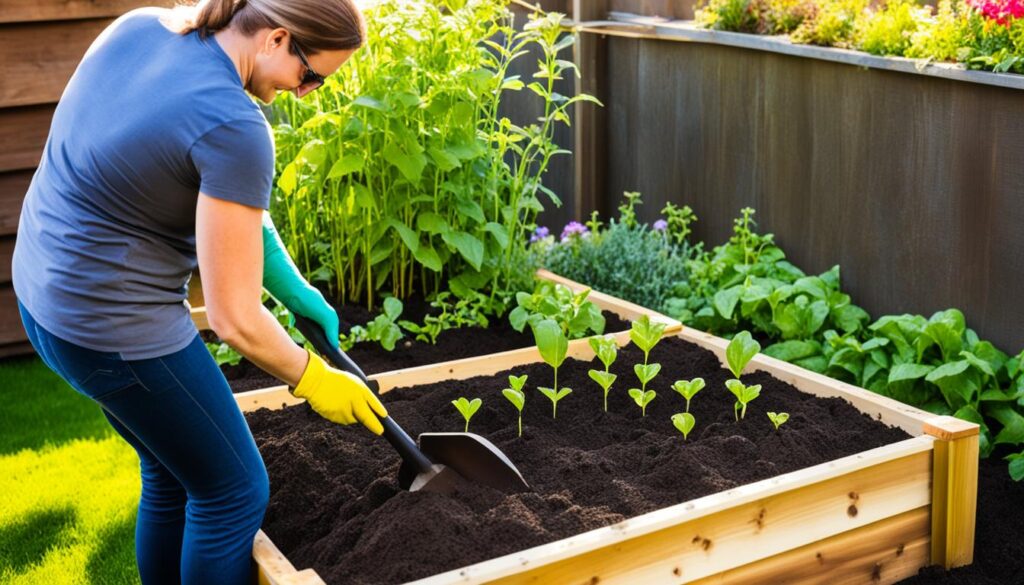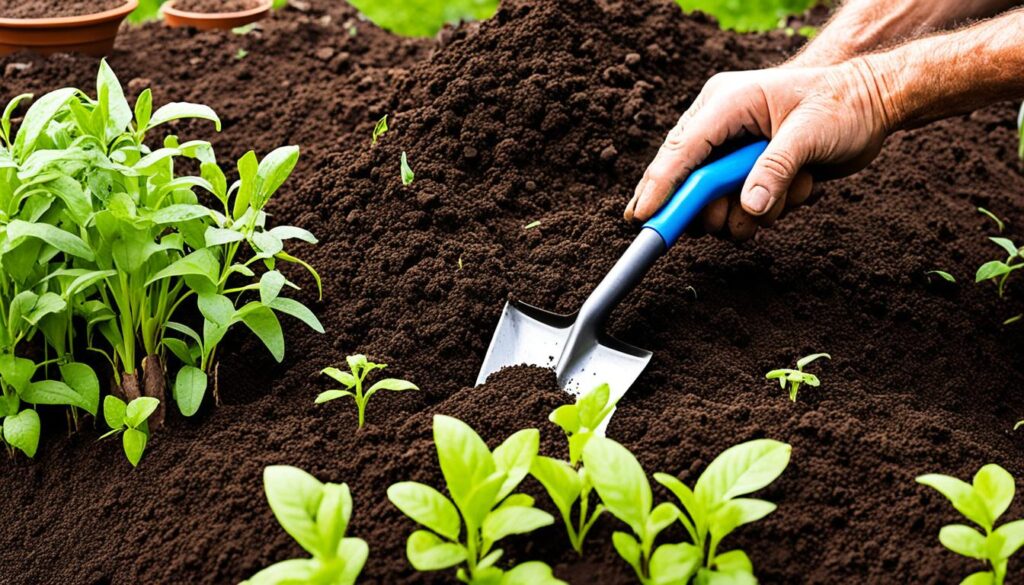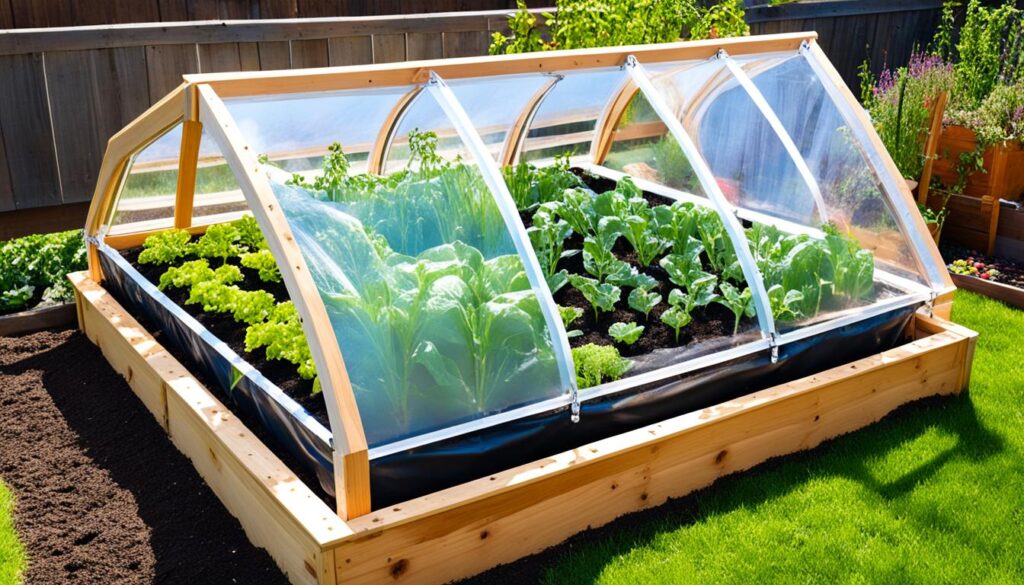Understanding the reasons behind your iris not blooming is essential for promoting healthy, vibrant flowers in your garden. There can be several factors that contribute to this issue, such as overcrowding, lack of sunlight, frost damage, and excessive heat.
Key Takeaways:
- Overcrowding can prevent iris plants from blooming. Divide overcrowded clumps to provide adequate room for growth.
- Make sure your iris plants receive sufficient sunlight. Consider relocating them to a sunnier location if necessary.
- Protect your irises from late spring frost to prevent damage to emerging flowers.
- Excessive heat can stress iris plants. Provide shade or additional protection in hot climates.
- Check soil pH and fertility. Add appropriate amendments to promote blooming.
Overcrowded Iris Plants
One of the primary reasons why iris plants may not be producing flowers is overcrowding. When irises are packed tightly together, they face difficulties in obtaining essential nutrients and adequate space to grow. As a result, their ability to bloom efficiently is compromised.
To address this common issue, it is crucial to divide the overcrowded clumps of irises and provide them with ample room to thrive. By carefully lifting the rhizomes from the ground and separating them, you can ensure that each iris plant receives the necessary nutrients and space for healthy growth.
Once you have divided the clumps, consider relocating the individual rhizomes to different areas of your garden. This will not only give them sufficient space for growth but also reduce competition from neighboring plants. By doing so, you enhance the chances of your iris plants producing beautiful blooms.
An image of an iris flower to complement the topic of overcrowded iris plants.
Insufficient Sunlight
Lack of sunlight can be a significant factor that hampers the blooming of iris plants. These vibrant flowers require an ample amount of sunlight to thrive and reach their full potential. If your irises are not receiving sufficient light due to shading from nearby trees or surrounding plantings, it’s essential to consider taking action to improve their exposure to sunlight.
To help your iris plants bloom successfully, you may need to relocate them to a sunnier location within your garden. Identify an area that receives more direct sunlight, preferably for at least six hours a day. By allowing your irises to bask in the warmth and light of the sun, you can significantly enhance their blooming capabilities.

Remember that sunlight plays a vital role in the growth and development of irises. It stimulates the production of essential nutrients, encourages robust root development, and triggers the blooming process. Therefore, ensuring that your iris plants receive sufficient sunlight can significantly improve their overall health and blooming potential.
Frost Damage on Irises
One common issue that gardeners face when their irises are not flowering is frost damage. A late spring frost can harm the delicate emerging flowers of irises, hindering their blooming process. It’s essential to stay vigilant and keep track of the weather to protect your irises from frost if necessary.
To troubleshoot and prevent frost damage, there are several measures you can take:
- Monitor the weather: Stay updated on the weather forecast, especially during the spring when irises are most vulnerable to frost. Knowing when a frost is likely to occur can help you take proactive steps to protect your plants.
- Cover your irises: When frost is expected, cover your irises overnight with a protective layer, such as frost cloth or a bedsheet. This covering will help insulate the plants and prevent frost damage.
- Move potted irises indoors: If you have potted irises, consider moving them indoors when frost is predicted. Placing them in a protected area, such as a garage or greenhouse, can shield them from the cold temperatures.
By implementing these preventive measures, you can minimize the risk of frost damage on your irises and promote successful blooming.
Whether you’re a seasoned gardener or a beginner, troubleshooting iris blooming issues is an important step in ensuring vibrant and flourishing flowers in your garden. Understanding the factors that can prevent irises from flowering, such as frost damage, will empower you to take proactive measures to address and overcome these challenges.
Excessive Heat
Excessive heat can be a challenge for iris plants, affecting their ability to bloom. In hot climates, the intense heat can stress the plants, causing their flowers to remain wedged in the base of the leaves instead of blooming properly. Fortunately, there are a few steps you can take to help your irises thrive even in the heat.
Firstly, ensure that the rhizomes have enough room to grow. Overcrowding can exacerbate the effects of heat stress on irises, so give them sufficient spacing when planting. This will allow for better air circulation and reduce the risk of heat damage.
Additionally, consider providing shade or additional protection to shield your irises from the intense heat. This can be done by placing a shade cloth over the irises during the hottest parts of the day or strategically positioning them near taller plants that can offer some relief from the direct sunlight. Providing some shade will help regulate the temperature around the plants and prevent excessive heat from hindering their blooming process.
Iris Blooming Tip: Keep an eye on the weather forecast during hot spells and heatwaves. If extremely high temperatures are expected, provide extra shade or consider moving potted irises to a cooler location temporarily.
Protecting Irises from Heat Stress
To help your irises thrive and bloom despite the heat, here are some practical steps you can take:
- Water consistently: During hot weather, it is essential to keep the soil consistently moist. Water the plants deeply and regularly, allowing the water to penetrate down to the root level. However, be mindful of not overwatering and causing waterlogged conditions.
- Mulch the soil: Apply a layer of organic mulch, such as bark chips or straw, around the base of the iris plants. This will help insulate the soil, retain moisture, and regulate soil temperature.
- Choose heat-tolerant varieties: Some iris varieties are more adapted to hot climates and can better withstand the effects of excessive heat. Consider selecting heat-tolerant cultivars when choosing irises for your garden.
- Monitor and manage pests: In hot weather, pests and diseases can become more prevalent. Regularly inspect your irises for signs of pest infestation or disease and take necessary steps to manage them.
By providing adequate spacing, shade, and proper care during hot weather, you can help your iris plants bloom beautifully, even in the face of excessive heat.
Soil Fertility and pH
Proper soil fertility and pH levels are essential for promoting healthy iris blooming. Conducting a soil test can help determine whether the pH and fertility of the soil are suitable for iris growth. The ideal soil pH for irises is 6.8, which provides optimal conditions for their development. Additionally, irises require adequate levels of phosphorus to support flower formation.
If the soil test reveals deficiencies in fertility or pH, you can take steps to improve them. One option is to add amendments like superphosphate or bone meal to enhance soil fertility and provide the necessary nutrients for iris blooming. These amendments can effectively boost the overall health and vigor of your iris plants, leading to more abundant and vibrant blooms.
Ensuring the soil has the right pH and fertility levels is crucial for optimizing iris blooming. By addressing any deficiencies and providing the necessary nutrients, you can create an environment that supports the growth and development of your iris plants, resulting in beautiful and bountiful flowers.
Depth of Planting
Planting iris rhizomes at the correct depth is crucial for promoting blooming and preventing problems. The depth at which you plant the iris rhizomes can impact their ability to bloom successfully. It is recommended to plant the rhizomes near the soil surface, with the tops either at or slightly below the soil surface. Planting them too deep can hinder the blooming process, as the rhizomes may struggle to receive adequate sunlight and nutrients.
When planting irises, ensure that the rhizomes are positioned properly. It’s important to remember that rhizomes are not bulbs, and burying them too deeply can lead to issues. By following the correct planting depth guidelines, you can provide the optimal conditions for your irises to thrive and bloom.

Overcrowding and Competition
If your irises are not blooming as desired, overcrowding and competition from other plants may be to blame. As the irises’ rhizomes multiply over time, they can become tightly packed, reducing their blooming potential. To improve iris blooming and ensure healthy growth, consider taking the following iris care tips:
- Divide and conquer: Dig up the crowded clump of irises and carefully divide the rhizomes. Gently separate them and plant each rhizome individually in different areas of your garden. This will provide the irises with sufficient space to grow and thrive without competing for resources.
- Find the right spots: When planting the divided rhizomes, choose areas in your garden that offer the optimal growing conditions for irises. Ensure the planting location receives adequate sunlight (at least six hours of direct sunlight per day) and has well-draining soil.
- Give them room to breathe: Place the iris rhizomes in the soil, ensuring that they are not overcrowded in their new locations. Plant them at their recommended depth, usually with the tops of the rhizomes slightly above or at ground level. Adequate spacing will encourage proper air circulation and prevent overcrowding.
Insufficient Water
While irises are drought-tolerant, they still require some water to bloom. Inadequate watering can lead to irises not flowering as expected. To promote blooming, it’s important to ensure that your irises are receiving sufficient water, especially during dry periods.
A good rule of thumb is to provide about 1 inch of water per week, either through rainfall or manual irrigation. If you notice that your irises are not blooming and the soil is dry, increase the frequency and duration of watering.
However, it’s crucial to strike a balance and avoid overwatering. Overwatering can lead to root rot and other problems that can further hinder blooming. To prevent this, ensure that the soil is well-draining and allow it to dry out slightly between watering sessions.
One effective watering tip is to deep water irises. This means applying water directly to the soil, allowing it to penetrate deep into the roots. Shallow watering only wets the surface and does not reach the entire root system, which can result in insufficient water uptake.
By providing adequate water while maintaining proper drainage, you can help your irises bloom beautifully and showcase their vibrant, colourful flowers.

Late Freeze and Other Factors
A late freeze can have detrimental effects on the health of your iris plants, particularly on the foliage and buds. When exposed to freezing temperatures, irises can experience damage that prevents them from blooming. It’s crucial to monitor the weather and take necessary precautions to protect your irises from late freezes.
In addition to late freezes, insect or disease attacks can also hinder iris blooming. Pests like aphids, thrips, and leaf spot diseases can cause damage to the leaves and flowers of your irises, resulting in a poor blooming performance. Regularly inspect your plants for any signs of pest infestation or disease and take appropriate measures to eliminate them.
To ensure the overall health and well-being of your irises, maintaining a vigilant approach is key. By promptly addressing any pest or disease issues and implementing appropriate control methods, you can create a favorable environment for successful blooming. Remember to monitor your irises regularly, provide them with proper care, and troubleshoot any problems that may arise.








